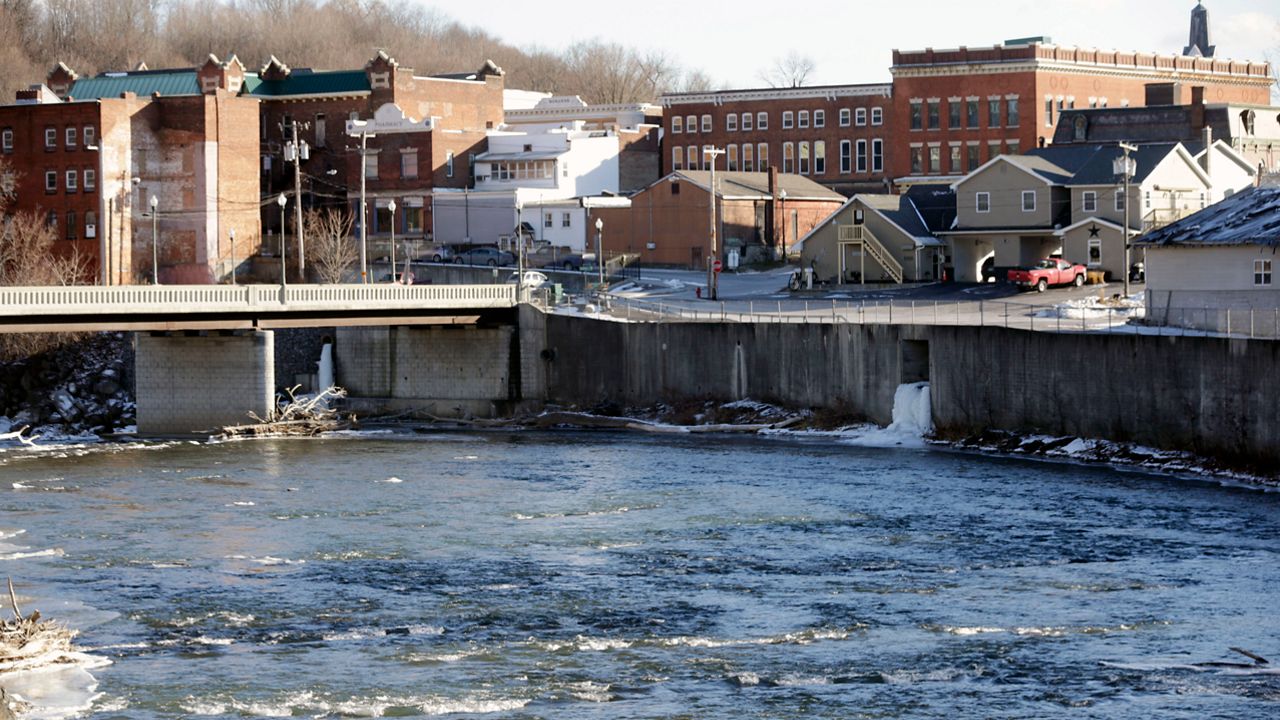The New York State Department of Environmental Conservation (DEC) had its shot last night during a public forum to convince the residents of the Village of Hoosick Falls that its chosen water source proposal is the best option for them.
You may remember that this eastern New York community’s drinking water was contaminated by PFOA from two companies: St. Gobain and Honeywell, leading to its designation as a Superfund site.
It has taken years, but the DEC is finally proposing that the polluters pay for two new ground water wells south of Hoosick Falls, each outfitted with a granular activated carbon filtration system or GAC.
But several questions remain around the proposal, according to Elizabeth Moran, environmental policy director for the New York Public Interest Research Group (NYPIRG).
“We do have a lot of questions,” Moran told Capital Tonight. “It is very important that the DEC and DOH provide the public with all the information necessary so that residents have the security of knowing that this is truly the best option.”
One of the many outstanding issues Moran mentioned was the safety of the new wells.
“How sure is DEC that these two groundwater wells are safe from future pollution? There’s a lot of concern about the Hoosick Valley. The plume from Saint Gobain in Hoosick Falls isn’t the only pollution plume,” she explained.
But DEC Commissioner Basil Seggos, who appeared on Friday’s edition of Capital Tonight, told host Susan Arbetter that he is confident that the wells selected by DEC are safe now and will continue to be safe in the future.
“We have spent, frankly, years of our time to challenge ourselves on that very question,” Seggos said. “Using data, using science, using field investigations to ascertain is this the safest and cleanest water supply that we could find for this important village. We’ve done that, and we’ve shared our information with the public. We are very confident that this supply, once it’s tapped into, will be protective of human health and the environment.”
Moran still considers it an open question. She also told Capital Tonight that residents of the village with private wells have questions too.
“What’s going to happen to private well owners, especially those who want to hook up to a municipal system?” she asked.
Seggos responded.
“The line that we would run from the drinking water source, the new source…that line is about a mile and a half long so the private wells that we have identified over the years that are on private systems, would be able to connect into that system,” he said.
Moran also wanted to know who would pay for the maintenance and upkeep of the GAC systems.
“It’s our intent to make sure that the GAC system is part of the remedy in perpetuity. St. Gobain and Honeywell would pay for the operation of the GAC,” Seggos said.
But there are additional concerns for residents of Hoosick Falls, including what the impact would be of a permanent carbon filtration system on home values.
Rensselaer County real estate broker Anthony Gucciardo, president of Gucciardo Real Estate Group, has been a broker in the region for 20 years.
“Anytime there’s any type of contamination or concern with water, obviously that’s a major resale issue,” he said. “We are in a strong seller’s market right now and I don’t think Hoosick Falls is experiencing the same market that the general Capital Region is. And I wouldn’t be surprised if that wasn’t one of the reasons why.”
When asked specifically about how a carbon filtration system might impact home values, he compared the issue to radon.
“I definitely think there would be people who would have concerns with that, same as if there were a radon system and high levels of radon in an area,” Gucciardo explained.
When presented with these statements, Seggos cited how effective the GAC system has been for Hoosick Falls over the past five years.
“I know the community now feels that it is safe option. It shouldn’t have a negative impact on home values; if anything, the science and data and technology we put in place should restore some of the property value," he said.
That said, Seggos admits that there may be a learning curve for real estate brokers and potential buyers.
“Environmental stigma is a real thing, and it is commonplace all across the country. Once the communities and realtors and buyers are made aware of the technologies that are protecting them are routine, run-of-the-mill, that gives everyone a level of comfort that what’s in place what negatively affect anyone’s home values.”
But the DEC’s fix is very complicated, and questions from both residents and advocates remain.
“The other remaining question on my end, and for many, is to see the full suite of lab results for what contaminants have been tested for in these proposed wells,” said Moran.
She is hoping the DEC compares the contamination in both the new groundwater wells with that of the Tomhannock Reservoir, which serves as the city of Troy’s drinking water source and which some people want to see serve Hoosick Falls as well.
“If the end of the day the Tomhannock is cleaner than the groundwater wells they’re looking into, they should be pursuing the Tomhannock," Moran said. "But there’s a very good chance that’s not the case, and that the wells they are proposing are cleaner than the Tomhannock Reservoir, in which case, of course, they should go with the groundwater wells.”
In either case, Moran said, “money should not be a concern here."
The public comment period for the DEC’s new water source runs through June 4.


